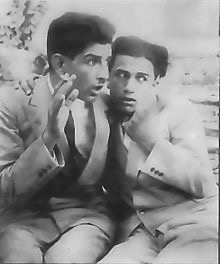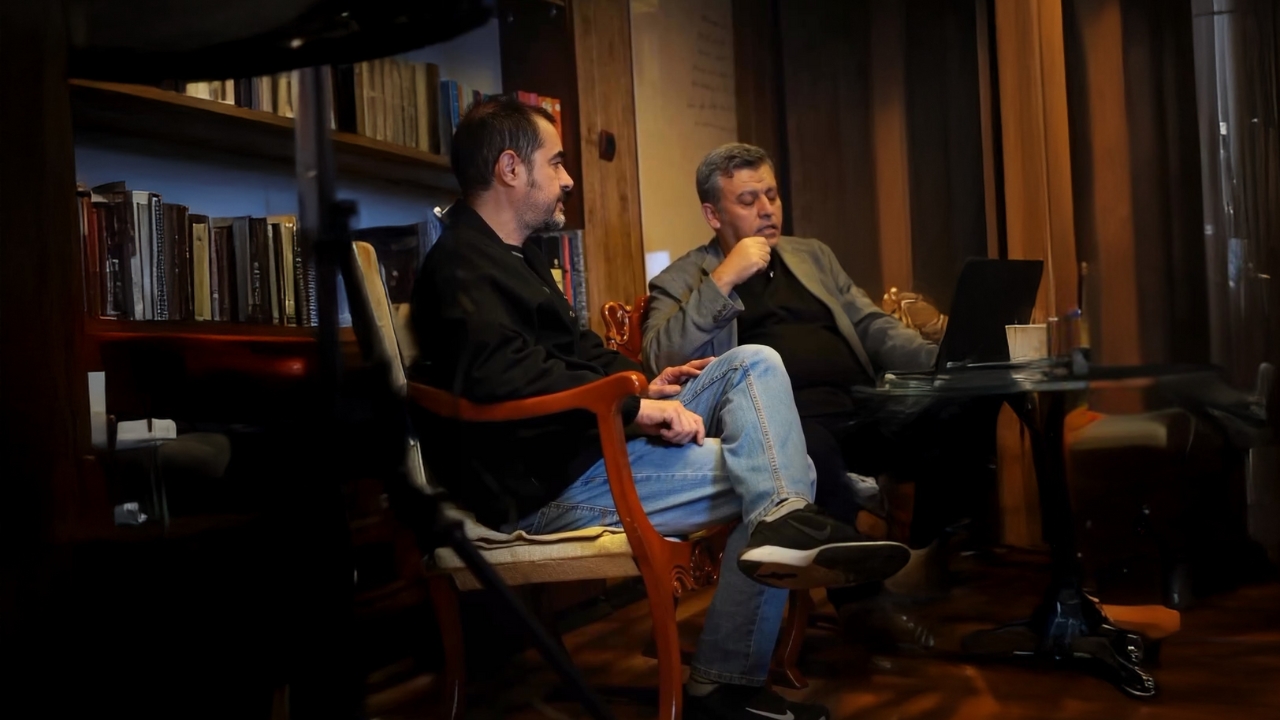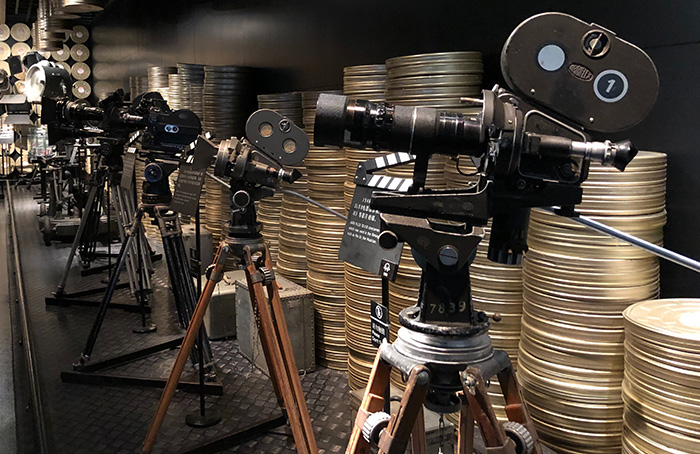
The first Iranian feature film was a black-and-white silent movie titled Abi and Rabi, directed by Iranian-Armenian filmmaker Ovanes Ohanian in 1930. The film was produced by Sakur Lidzer and shot by Khan Baba Motazedi, the third cinematographer in Iranian cinema following Mirza Ebrahim Khan Akkas Bashi and Rusi Khan. Motazedi filmed many productions, including Abi and Rabi, and he built a darkroom in his house where he filmed and developed the intertitles for silent films.
For this film, Friedrich Talberg created illustrations, which Motazedi used to design the opening credits of Abi and Rabi. Talberg’s artwork suggests that Iran’s first film adhered to professional filmmaking standards, including a proper title sequence. The film premiered on Friday, January 2, 1931, at Mayak Cinema in Tehran.
Abi and Rabi cost 560 tomans to produce and earned around 7,000 tomans for Ohanian. The silent film follows the comedic adventures of two men—one short and one tall—placed in various humorous situations. It was inspired by the Danish film Pat und Patachon.
The story revolves around two characters: Abi (played by Mohammad Khan Zarrabi) and Rabi (played by Gholamali Khan Sohrabifard). In one scene, when Abi drinks water, Rabi’s stomach inflates. In another, Rabi lies under a rolling beam while Abi strikes him with a hammer, causing Rabi to flatten and shrink. At a restaurant named Laqantah, Abi and Rabi order a chicken, but just as they are about to eat it, the chicken suddenly takes flight.
Abi and Rabi marked the dawn of Iranian cinema, laying the foundation for a film industry that would grow in both artistry and influence. As the first feature-length Iranian film, it introduced audiences to the magic of storytelling on screen and inspired future filmmakers to build upon its legacy. What began as a simple silent comedy became the starting point of a cinematic journey that would evolve into one of the most distinctive film industries in the world—and the rest is history.



